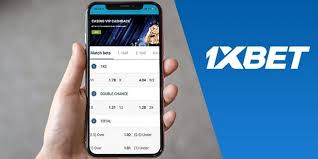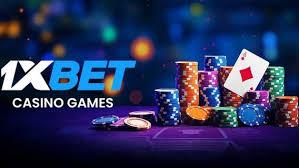1xbet51
Mastering the live bet Strategies, Psychology and Smart In-Play Decisions

The appeal of the live bet lies in its immediacy: outcomes shift by the minute, momentum swings, and opportunity appears in the gaps that pre-match markets cannot always account for. For those looking to understand this dynamic world, combining a clear strategy with disciplined risk management is essential. Whether you are a curious newcomer or an experienced bettor seeking to refine your approach, learning how to read the match context is crucial — and sometimes a fresh perspective, such as trying alternative market formats like live bet aviator 1xbet, can open new possibilities.
Live betting is different from pre-match wagering in several important ways. First, information flow is continuous: substitutions, red cards, injuries, weather changes and coaching adjustments can alter probabilities rapidly. Second, odds are more volatile; they react not only to objective events but also to market sentiment, creating short-lived inefficiencies that alert bettors can exploit. Third, live markets demand faster decision-making and smaller time windows for placing bets. Understanding these distinctions helps you adopt an appropriate mindset and operational routine.
Start with a clear bankroll plan. Live betting can tempt you to chase losses or increase stake sizes after a string of small wins. Set a fixed live bankroll separate from your overall betting funds and determine maximum stakes as a percentage of that live pool — many experienced bettors recommend 1–3% per trade depending on your confidence and edge. This prevents catastrophic losses from a few impulsive choices and keeps your process repeatable over the long run.
Specialize in events and markets you can monitor closely. Football, tennis and basketball are popular for live bets because play is continuous or momentum shifts are obvious, but each sport requires a different reading skill. For football, focus on game state (scoreline, remaining time, possession pressure) and key players on the field. For tennis, watch service games and return statistics, plus player body language and energy levels. For basketball, pay attention to rotations, foul trouble and hot streaks. Depth of knowledge in one or two sports beats superficial familiarity with many.

Market selection matters. Some live markets are easier to read and less noisy — for instance, next goal, handicap changes, and total overs/under in specific short intervals. Exotic markets often carry higher margins and lower liquidity, making them harder to exploit. Identify markets that react to observable events and where the bookmaker’s pricing lags the actual probability change. Volume and liquidity also influence execution: odds may move fast on small exchanges or low-liquidity markets, so prioritize markets where you can enter and exit positions without large slippage.
Develop a routine for information intake. Reliable feeds, live statistics and instant video are essential. Use a primary broadcast or live stream as your reference and supplement it with trusted statistical trackers (possession, shots, expected goals, etc.). Avoid relying solely on social media or second-hand reports in the heat of an in-play decision; misinformation can lead to mispriced opportunities that close before you can react.
Recognize momentum patterns and the difference between correlation and causation. A run of attacking plays does not always guarantee a goal, and chasing that momentum without considering context (time left, defensive formations, substitutions) is costly. Instead, categorize momentum as short-term (a few minutes) or structural (a change that persists because of tactical shifts). Short-term surges often present quick, low-stake opportunities. Structural changes can indicate stronger edges, allowing for larger stakes or multi-step trades.
Use hedging and trading techniques to manage exposure. Live betting is well-suited to trading: you can take a position early and lay off part of it later to lock in profit or cut losses. This requires discipline and a platform that supports both back and lay or cash-out options. Hedging is not always about reducing profit; it is about controlling risk and converting a probable return into a guaranteed one when conditions change.
Keep emotions in check. The speed and drama of in-play markets can trigger fear and greed. A practical method is to predefine three outcomes for every trade: best-case (hold), likely-case (partial hedge) and worst-case (stop-loss). If the market moves into your worst-case scenario, act according to your pre-set plan rather than reactively increasing exposure to recover losses. Consistency in following rules builds long-term profitability more reliably than occasional big wins driven by emotion.

Learn to value timing over prediction. In many cases, a successful live bettor is not someone who consistently predicts the final outcome but someone who times entries and exits when odds are temporarily mispriced. This could mean waiting for a line drop after an overreaction to an event or striking quickly when a clear advantage appears. Timing requires awareness of how markets respond to particular events and which operators are slower to adjust odds.
Record keeping and analysis are indispensable. Track not only wins and losses but also why you made each live bet: the trigger event, pre-bet edge estimate, stake size relative to bankroll, and the result. Periodically review these notes to identify which strategies work and which psychological or informational biases influenced bad decisions. Over time, the data will reveal your strengths and weaknesses, enabling targeted improvement.
Technology can enhance, but not replace, judgement. Tools that provide live stats, alert systems for specific events, and fast execution platforms are valuable. However, overreliance on automated signals without understanding the underlying reasoning often leads to poor decisions in unusual situations. Use technology to amplify your edge, not to abdicate responsibility for choices under uncertainty.
Be mindful of legal and responsible gambling considerations. Live betting’s immediacy can amplify harm for vulnerable players. Set deposit limits, session time limits and self-exclusion options when needed. Know local regulations regarding live wagering and ensure you use licensed operators when placing real-money bets.
Finally, cultivate patience and a learning mindset. Live betting rewards incremental improvements: better situational reading, faster but disciplined execution, and superior risk control. Expect variability, and focus on process rather than instant results. With time, a consistent approach to study, disciplined staking, and thoughtful use of technology can turn the exhilarating rush of in-play markets into a disciplined and potentially profitable strategy.

